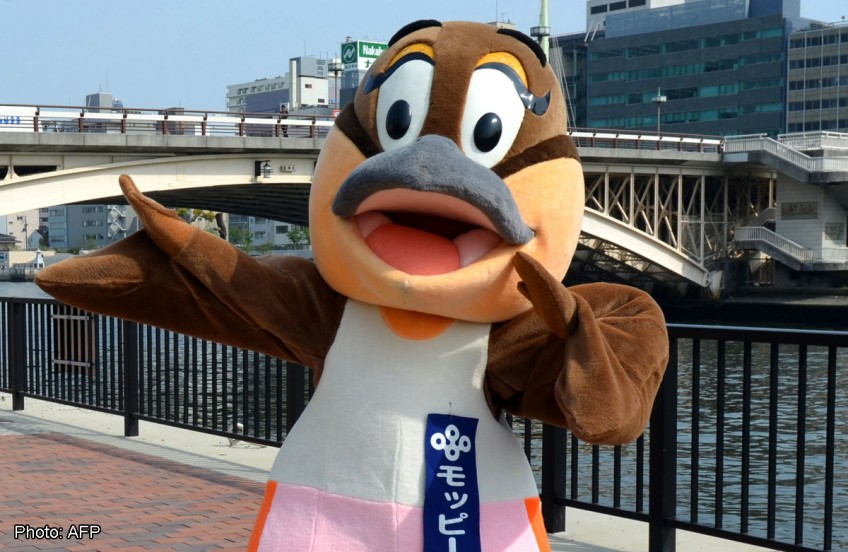Cuddly mascots set for the chop in Japan

TOKYO - Dozens of state-funded cuddly mascots could be culled in western Japan after a local authority found the public doesn't recognise many of them, as managers look to rein in an obsession with cuteness.
Thousands of "yuru-kyara" ("laid-back characters") have been created all over Japan by police, traffic safety officials, tax offices, libraries and even jails in a bid to press home various messages to a public particularly susceptible to oversized puppets.
The most successful go on to become national celebrities, playing their part in an industry worth tens of billions of dollars a year in merchandising alone.
Creations like Kumamon - a tubby black bear used to promote a lesser-known part of southern Japan - are instantly-recognisable motifs that have become part of the country's cultural landscape, adorning everything from keychains to planes.
Others carve their own niches, like Asahikawa Prison's Katakkuri-chan, a nearly two-metre (6ft 6ins) humanoid with a huge square face and an enormous purple flower for hair.
Or national broadcaster NHK's Domo-kun, a brown rectangle with permanently-bared teeth that looks a little like an angry hash brown.
But the huge number of yuru-kyara - and their dazzling array of peculiar features - condemns most to the obscurity of peddling little-heeded public safety messages.
Now Osaka prefecture has decided it is time for a cull, and is looking to trim its stable of 45 yuru-kyara to concentrate its efforts on a few more-recognisable offerings.
"As I have said many times, we have too many characters," Osaka governor Ichiro Matsui told reporters last month.
Stung by the success of Funassyi, an unofficial pear-fairy mascot for the fruit-producing city of Funabashi near Tokyo, Matsui said many of Osaka's yuru-kyara barely registered on the public radar.
"We are all being beaten by this character. We've got to do something," Matsui said.
Osaka's own offering, Moppy, which is inspired by a native bird, ranked a lowly 1,072 among more than 1,500 mascots that took part in a popularity vote last year.
Governor Matsui has suggested the local government cast aside some of the lesser-known mascots and focus their efforts on Moppy, perhaps by letting him procreate and even learn to talk.
"I think it is a good idea for Moppy to have a family - Moppy Jr. could help promote child rearing policies and Moppy's wife could assist with women's employment issues," he said.
An Osaka prefecture official said Thursday the local government is currently studying which mascots can be retired.
"Some of them are still being used in projects, which we cannot drop abruptly," she said.
"But those which can be replaced by Moppy and its family could go." The Japan Local Character Association, a group that supports regional economies through the use of mascots, urged patience, saying it takes time for yuru-kyara to become popular.
"Kumamon was not necessarily popular from the very beginning," said Noriko Nakano, who works at the association's headquarters in central Shiga.
"Neither was Funassyi. There was time when people gave him the cold shoulder," she said, adding the association believed there were around 3,000 characters nationwide.
"It is important to use social networking and blogging, but mascot characters must also go out and communicate with people directly. Low-key activities are important to gain popularity," she told AFP.